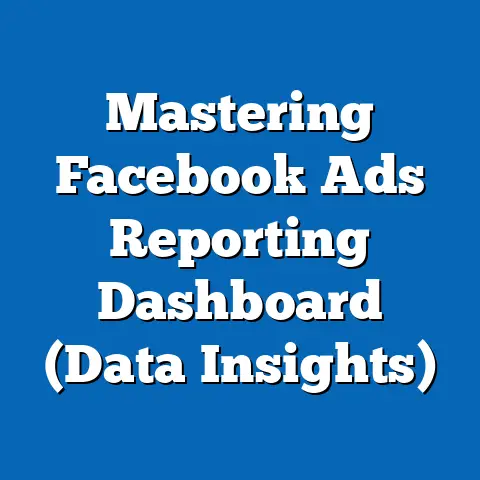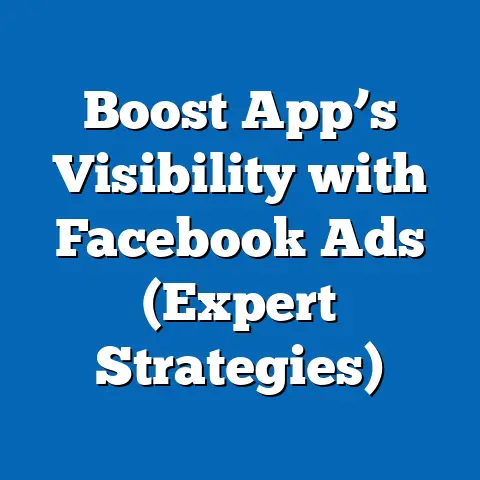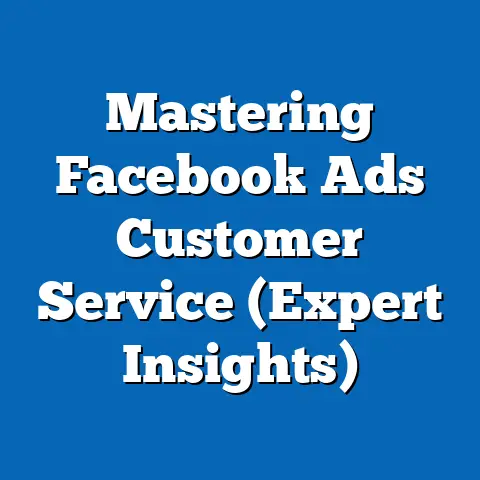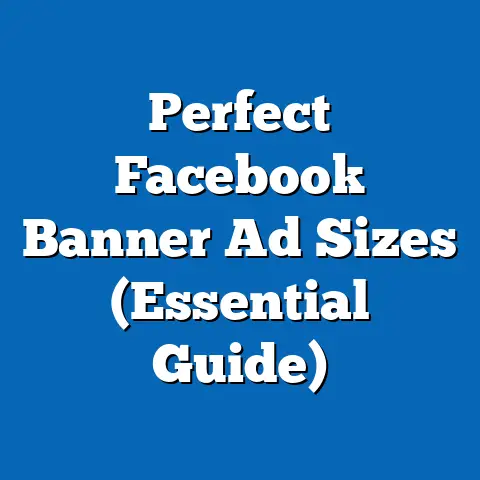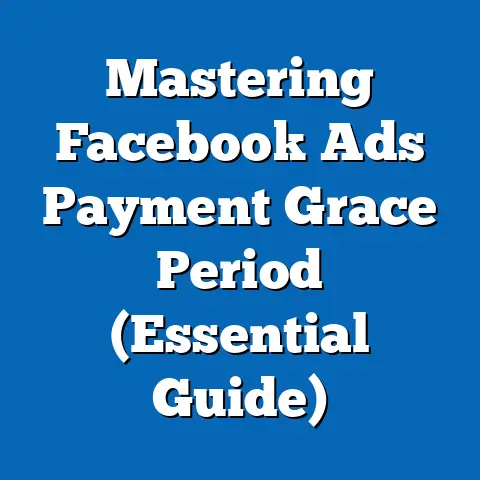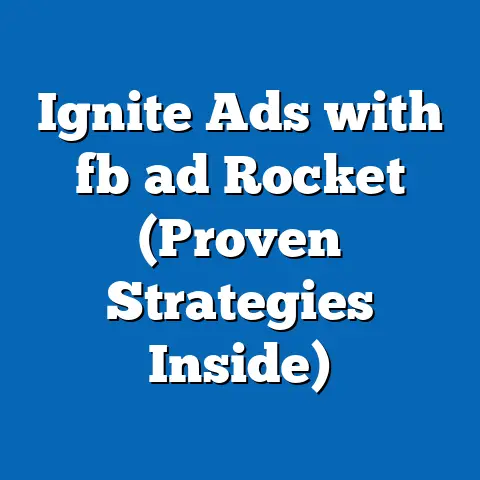Drive Sales with Facebook Ads (Unlock ClickFunnel Strategies)
In a world where social media is inundated with ads, it often feels like shouting into a void. We’re bombarded with marketing messages daily, and it’s easy to become numb to the noise. But why is it that some Facebook ad campaigns yield astronomical sales, while others barely scrape by, leaving business owners scratching their heads and wondering where they went wrong? I’ve seen it happen countless times – the difference between a campaign that explodes and one that fizzles often comes down to understanding the nuances of Facebook advertising, especially when combined with strategic tools like ClickFunnels. This isn’t just about throwing money at ads; it’s about crafting a cohesive, targeted, and optimized journey for your potential customers. I’m here to tell you that understanding the power of Facebook ads, especially when combined with ClickFunnel strategies, can unlock unprecedented sales potential for businesses of all sizes. Let’s dive in and explore how you can turn those “barely scraping by” campaigns into sales powerhouses!
The Power of Facebook Ads
Facebook, now under the Meta umbrella, remains a behemoth in the digital marketing landscape. With billions of active users, it offers an unparalleled reach to businesses of all sizes. I remember when Facebook Ads were just starting out – it felt like the Wild West, but even then, the potential was clear. It wasn’t just about getting your name out there; it was about connecting with the right people.
The true significance of Facebook as a marketing platform lies not only in its vast user base but also in its advanced targeting capabilities. The platform allows advertisers to pinpoint their ideal customers based on a myriad of factors, including demographics, interests, behaviors, and even life events. I’ve personally witnessed campaigns that skyrocketed simply because we were able to laser-focus on the perfect audience.
Consider these statistics:
- ROI: Studies have shown that for every $1 spent on Facebook ads, businesses can earn an average of $4.32 in revenue. (Source: Facebook Business)
- Conversion Rates: Facebook ads have a higher conversion rate than other digital advertising channels, averaging around 9.21%. (Source: WordStream)
- Reach: Facebook’s advertising reach is unmatched, allowing businesses to connect with over 2 billion potential customers worldwide. (Source: Statista)
These numbers aren’t just figures; they represent real opportunities for businesses to drive sales and grow their revenue. But, and this is a big but, it all hinges on having a solid ad strategy that aligns with your business goals. A haphazard approach is like throwing darts in the dark – you might hit something, but it’s unlikely to be the bullseye. I always tell my clients: “Start with the ‘why’ before the ‘how.'” What are you trying to achieve? Who are you trying to reach? Once you have a clear understanding of your objectives, you can begin to craft a Facebook ad strategy that truly delivers results.
Key Takeaway: Facebook’s vast reach and advanced targeting capabilities make it a powerful platform for driving sales, but a solid ad strategy aligned with business goals is essential for success.
Understanding the ClickFunnel Concept
So, what exactly is a ClickFunnel? In simple terms, it’s a series of steps designed to guide a potential customer from awareness to purchase in the most efficient way possible. Think of it as a digital sales funnel, carefully crafted to convert visitors into paying customers. I often describe it as a “guided tour” through your product or service, leading the customer to the ultimate destination: a sale.
Unlike a traditional website, which can be overwhelming and confusing with its multiple pages and navigation options, a ClickFunnel is laser-focused on a specific goal. It eliminates distractions and guides the visitor through a pre-defined path, increasing the likelihood of conversion.
Let’s break down the key components:
- Landing Page: This is the first page a visitor sees after clicking on your Facebook ad. It’s crucial to make a strong first impression with a compelling headline, engaging visuals, and a clear call-to-action. I’ve seen landing pages that instantly turn visitors away because they are confusing or unattractive. Remember, you have mere seconds to capture their attention.
- Lead Magnet: This is an incentive offered in exchange for the visitor’s contact information (usually an email address). It could be a free ebook, a checklist, a webinar, or anything else that provides value to your target audience. A strong lead magnet is like a handshake – it builds trust and establishes a relationship with your potential customer.
- Sales Page: This is where you present your product or service and make your pitch. Highlight the benefits, address potential objections, and make it easy for the visitor to make a purchase. I always recommend including testimonials and social proof to build credibility.
- Upsell Opportunities: After the initial purchase, offer additional products or services that complement the original purchase. This is a great way to increase the average order value and maximize your revenue. Think of it as the “would you like fries with that?” of the digital world.
- Thank You Page: This is the final step in the funnel, where you thank the customer for their purchase and provide instructions on how to access their product or service. It’s also a great opportunity to build brand loyalty and encourage repeat purchases.
The beauty of ClickFunnels is that they can enhance Facebook ad campaigns by creating seamless customer journeys from ad click to purchase. Instead of sending traffic to a generic website, you’re guiding them through a carefully designed funnel that increases the likelihood of conversion. I’ve seen businesses double or even triple their sales by simply switching from a traditional website to a well-optimized ClickFunnel.
Key Takeaway: ClickFunnels provide a structured, goal-oriented path for potential customers, enhancing Facebook ad campaigns by creating seamless customer journeys from ad click to purchase.
Integrating Facebook Ads with ClickFunnel Strategies
Now that we understand the power of Facebook ads and the concept of ClickFunnels, let’s explore how to integrate them effectively. This is where the magic truly happens.
The process of setting up Facebook ads that complement ClickFunnel designs involves a few key steps:
- Define Your Goal: What do you want to achieve with your Facebook ad campaign? Are you trying to generate leads, drive sales, or increase brand awareness? Your goal will determine the type of ClickFunnel you create and the type of Facebook ad you run.
- Choose Your ClickFunnel Template: ClickFunnels offers a variety of pre-built templates designed for different purposes, such as lead generation, sales, and webinar registration. Choose a template that aligns with your goal and customize it to match your brand.
- Create Your Facebook Ad: Craft an ad that is relevant to your target audience and promotes your ClickFunnel. Use compelling visuals, persuasive copy, and a clear call-to-action.
- Link Your Ad to Your ClickFunnel: This is where the integration happens. When someone clicks on your Facebook ad, they should be directed to the landing page of your ClickFunnel.
- Track Your Results: Use Facebook Ads Manager and ClickFunnels analytics to track the performance of your campaign and make adjustments as needed.
Creating effective ad campaigns that drive traffic to ClickFunnels requires a strategic approach. Here’s a step-by-step guide:
- Step 1: Define Your Target Audience: Use Facebook’s targeting options to pinpoint your ideal customers based on demographics, interests, and behaviors.
- Step 2: Create a Compelling Ad Creative: Use high-quality images or videos that grab attention and communicate your message effectively.
- Step 3: Write Persuasive Ad Copy: Highlight the benefits of your product or service and create a sense of urgency.
- Step 4: Use a Clear Call-to-Action: Tell people exactly what you want them to do, such as “Learn More,” “Sign Up,” or “Shop Now.”
- Step 5: Test Different Ad Variations: A/B test different ad creatives, copy, and targeting options to see what works best.
- Step 6: Optimize Your Campaign: Continuously monitor your campaign performance and make adjustments as needed to improve your results.
A/B testing various ad formats (carousel, video, etc.) is crucial for optimizing funnel performance. I’ve found that video ads often outperform static images, but it really depends on your target audience and your product or service. Carousel ads are great for showcasing multiple products or features, while single image ads are best for simple, straightforward messages. The key is to experiment and see what resonates most with your audience.
Key Takeaway: Integrating Facebook ads with ClickFunnel strategies involves setting up ads that complement funnel designs, creating effective campaigns that drive traffic, and A/B testing various ad formats to optimize performance.
Crafting Compelling Ad Copy and Creative
Your ad copy and creative are the first things potential customers see, so it’s essential to make a strong impression. I’ve learned that crafting compelling ad copy that resonates with your target audience and encourages clicks is a blend of art and science.
Here are a few tips:
- Know Your Audience: Understand their pain points, desires, and motivations. Speak directly to their needs and offer solutions.
- Use Strong Headlines: Your headline is the first thing people will read, so make it count. Use strong, attention-grabbing language that piques their curiosity.
- Highlight Benefits, Not Features: Focus on how your product or service will improve their lives, rather than just listing its features.
- Create a Sense of Urgency: Use words like “limited time offer” or “while supplies last” to encourage people to take action now.
- Use Social Proof: Include testimonials, reviews, or case studies to build credibility and trust.
- Keep it Concise: People have short attention spans, so get to the point quickly and avoid unnecessary jargon.
Understanding the psychological triggers that motivate users to engage with ads and ultimately convert is crucial. These triggers include:
- Scarcity: People are more likely to take action if they believe something is in limited supply.
- Authority: People are more likely to trust someone who is an expert in their field.
- Social Proof: People are more likely to do something if they see others doing it.
- Reciprocity: People are more likely to do something for you if you’ve done something for them.
- Loss Aversion: People are more motivated to avoid losing something than they are to gain something.
The significance of visuals in Facebook ads cannot be overstated. Eye-catching graphics and videos can make or break your campaign. Here are a few tips for creating visuals that grab attention:
- Use High-Quality Images: Avoid blurry or pixelated images. Use professional-looking photos or videos that are visually appealing.
- Use Bright Colors: Bright colors tend to grab attention more than muted colors.
- Use Faces: People are naturally drawn to faces, so include them in your visuals whenever possible.
- Keep it Simple: Avoid clutter and keep your visuals clean and easy to understand.
- Test Different Visuals: A/B test different visuals to see what resonates most with your audience.
I remember one campaign where we simply changed the image in the ad, and the click-through rate doubled overnight. It was a powerful reminder of the impact visuals can have on ad performance.
Key Takeaway: Crafting compelling ad copy and creative involves understanding your audience, using psychological triggers, and creating eye-catching visuals that grab attention.
Targeting Your Audience Effectively
One of the biggest advantages of Facebook advertising is its powerful targeting options. You can pinpoint your ideal customers based on a wide range of factors, including demographics, interests, behaviors, and even life events. I’ve seen campaigns that went from mediocre to amazing simply by refining the targeting.
Facebook’s targeting options include:
- Demographics: Target people based on age, gender, location, education, and other demographic factors.
- Interests: Target people based on their interests, hobbies, and passions.
- Behaviors: Target people based on their online behaviors, such as purchase history, website visits, and app usage.
- Custom Audiences: Upload your own customer data (such as email lists or phone numbers) to create custom audiences.
- Lookalike Audiences: Create audiences that are similar to your existing customers.
Identifying and segmenting your target audience is crucial for maximizing ad relevance and effectiveness. Here are a few strategies:
- Create Buyer Personas: Develop detailed profiles of your ideal customers, including their demographics, interests, and behaviors.
- Use Facebook Audience Insights: This tool provides valuable insights into your target audience, including their demographics, interests, and behaviors.
- Test Different Targeting Options: A/B test different targeting options to see what works best.
- Use Layered Targeting: Combine multiple targeting options to create highly specific audiences.
Retargeting plays a crucial role in boosting sales through Facebook ads and ClickFunnel integration. Retargeting allows you to show ads to people who have already visited your website or interacted with your content. This is a highly effective way to re-engage potential customers and drive them back to your ClickFunnel.
I’ve seen retargeting campaigns that generate a 10x or even 20x return on investment. It’s like saying, “Hey, I noticed you were interested in this product. Here’s a special offer to encourage you to buy it now.”
Key Takeaway: Targeting your audience effectively involves using Facebook’s targeting options, identifying and segmenting your target audience, and leveraging retargeting to boost sales.
Analyzing and Optimizing Campaign Performance
Once your Facebook ad campaigns are up and running, it’s essential to track your results and make adjustments as needed. I always tell my clients, “Advertising is not a ‘set it and forget it’ activity. It requires constant monitoring and optimization.”
Key performance indicators (KPIs) to track the success of Facebook ad campaigns linked to ClickFunnels include:
- Click-Through Rate (CTR): This measures the percentage of people who click on your ad after seeing it.
- Cost Per Click (CPC): This measures the average cost you pay for each click on your ad.
- Conversion Rate: This measures the percentage of people who take the desired action after clicking on your ad (such as making a purchase or signing up for a newsletter).
- Cost Per Acquisition (CPA): This measures the average cost you pay to acquire a new customer.
- Return on Ad Spend (ROAS): This measures the revenue you generate for every dollar you spend on advertising.
Analytics tools like Facebook Ads Manager are essential for monitoring campaign performance. Facebook Ads Manager provides a wealth of data about your campaigns, including impressions, clicks, conversions, and cost. Use this data to identify areas for improvement and make adjustments to your campaigns.
Here are a few actionable tips for optimizing ad spend, improving click-through rates (CTR), and enhancing overall ROI:
- Pause Underperforming Ads: If an ad is not generating clicks or conversions, pause it and focus on your better-performing ads.
- Refine Your Targeting: Experiment with different targeting options to see what works best.
- Improve Your Ad Copy and Creative: Test different headlines, visuals, and calls-to-action to see what resonates most with your audience.
- Optimize Your Landing Page: Make sure your landing page is relevant to your ad and easy to navigate.
- Use Retargeting: Retarget people who have already visited your website or interacted with your content.
- Increase Your Budget: If your campaigns are performing well, consider increasing your budget to reach more people.
I’ve seen businesses significantly improve their ROI by simply paying attention to their data and making small adjustments to their campaigns. It’s all about continuous improvement.
Key Takeaway: Analyzing and optimizing campaign performance involves tracking key performance indicators, using analytics tools, and implementing actionable tips to improve ad spend, click-through rates, and overall ROI.
The Future of Facebook Ads and ClickFunnel Strategies
The landscape of digital advertising is constantly evolving. What works today may not work tomorrow. That’s why it’s essential to stay ahead of the curve and adapt your strategies as needed.
In the future, I believe that Facebook ads will become even more personalized and targeted. Artificial intelligence and machine learning will play an increasingly important role in optimizing campaigns and delivering the right message to the right person at the right time.
Businesses can stay ahead of the curve by:
- Staying Informed: Keep up with the latest trends and best practices in digital advertising.
- Experimenting: Don’t be afraid to try new things and test different strategies.
- Analyzing Your Data: Pay attention to your data and make adjustments to your campaigns as needed.
- Investing in Education: Take courses or attend conferences to learn new skills and stay up-to-date on the latest technologies.
Continuous learning and adaptation are crucial for mastering Facebook ads and ClickFunnel integration. The world of digital marketing is constantly changing, so it’s essential to be a lifelong learner.
I urge you to implement the strategies discussed in this article and unlock your sales potential through Facebook ads. Start small, test different approaches, and track your results. With a little effort and perseverance, you can create Facebook ad campaigns that drive significant revenue for your business.
Now, go out there and start creating some amazing Facebook ad campaigns!

